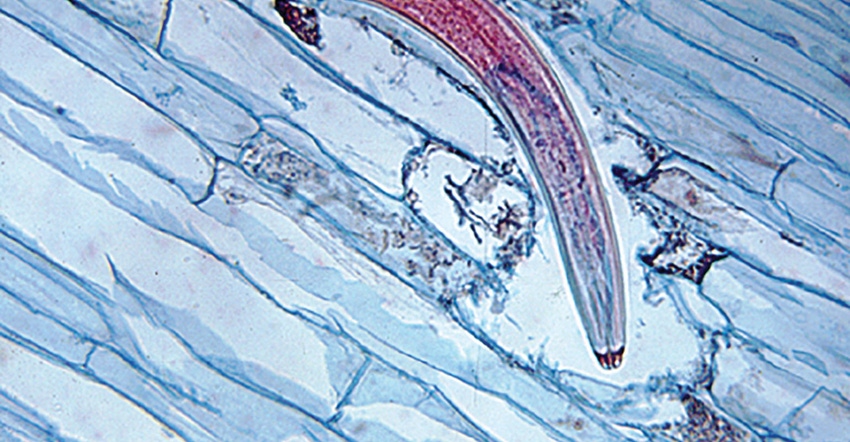
The National Cotton Council recently submitted comments to the Environmental Protection Agency supporting the registration of a new active ingredient, Trunemco, for use as a seed treatment for controlling nematodes in cotton. It could also be used in soybean production.
Since 1952, university plant pathologists have recorded large cotton yield losses from nematode damage. “Nematode control is important and we support the registrations and re-registrations of safe products for cotton,” says Don Parker, manager, Integrated Pest Management, National Cotton Council.
Management of southern root-knot nematode and the reniform nematode is critical to cotton and soybean farmers in the southern United States. Current management strategies continue to rely on nematicides because of the limited availability of resistant cultivars with high yield potential.
Data published in the Beltwide Cotton Conference Proceedings by the NCC Nematode Research and Education Program show an average 4.6 percent annual loss of lint to nematodes between 2000 and 2017, despite the use of existing products to control them. Control of nematodes is more than just a small problem for U.S. cotton producers.
“We have some effective nematicide products available for our growers, but we could always use more options,” says Dr. Bob Nichols, senior director, Agricultural and Environmental Research, Cotton Incorporated.
Another nematicide, fluopyram, sold as a standalone nematicide under the trade named Velum, also acts as an SDHI fungicide. Fluopryam has been evaluated as both a seed treatment and an in-furrow treatment for nematode suppression. Data from specific field trials have shown fluopyram formulations applied in-furrow at planting were more effective at suppressing early season nematode infection in cotton and soybean than when applied as a seed treatment.
“We welcome the opportunity to evaluate any new nematicides which can be used to help control nematodes,” adds Nichols. “They are damaging pests that continue to cost cotton and soybean farmers money from lost yields.”
About the Author(s)
You May Also Like




